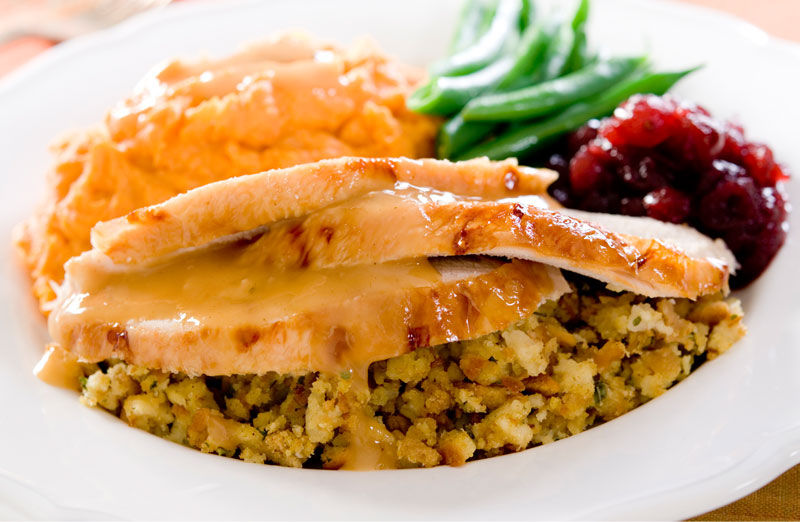
The holidays are here again, and the focus is on family and food. Unfortunately Thanksgiving meals are often high in fat and calories, but that doesn’t mean we can’t eat healthy. When we break down the basic components of traditional fare, we find some important nutritional benefits.
TURKEY
Some protein sources are healthier than others. When comparing protein by weight among various types of meat, turkey has fewer calories while providing more healthy nutrients per serving. Promising current studies are focused on the impact of arginine, which is an amino acid found in skinless, white meat turkey that researchers believe the body uses to not only make more protein, but to also promote the relaxing and opening of arteries. The skin and dark meat of any form of poultry contains most of the fat. Therefore, limiting or avoiding these areas helps keep calories and saturated fat to a minimum.
GREEN BEANS
Including fruits and vegetables with every meal can help decrease your risk of obesity, diabetes and heart disease. Green beans are a great addition to a Thanksgiving meal because they provide vitamins A, C and K, as well as fiber. They are also a good source of folate, which is of particular importance to women of childbearing age as studies have linked this nutrient to a lower incidence of neural tube defects such as spina bifida and anencephaly.
CRANBERRIES
Cranberries have long been a part of the traditional Thanksgiving dinner. Interestingly, Native Americans have long viewed cranberries as a “superfood” for health and medicine. Today we know cranberries contain polyphenols, which are plant chemicals that act as powerful antioxidants. Along with a healthy dose of vitamin C, polyphenols work to block damage caused by free radicals and help the body fight infections.
PUMPKIN
Pumpkin pie is a popular ending to many Thanksgiving meals. Even though the pie contains added sugar and fat, pumpkin is a good source of fiber that aids in digestion and helps promote a sense of satiety. Pumpkin also is a rich source of vitamin A, which acts as an antioxidant when consumed from a food source. Vitamin A is also linked to vision health, immunity and the maintenance of healthy skin, teeth and bones.
The importance of key nutrients found in traditional Thanksgiving meals is often overshadowed by excess fat and calories. With moderation via portion control, we can still enjoy the holiday while maintaining a healthy diet.




 by
by 


